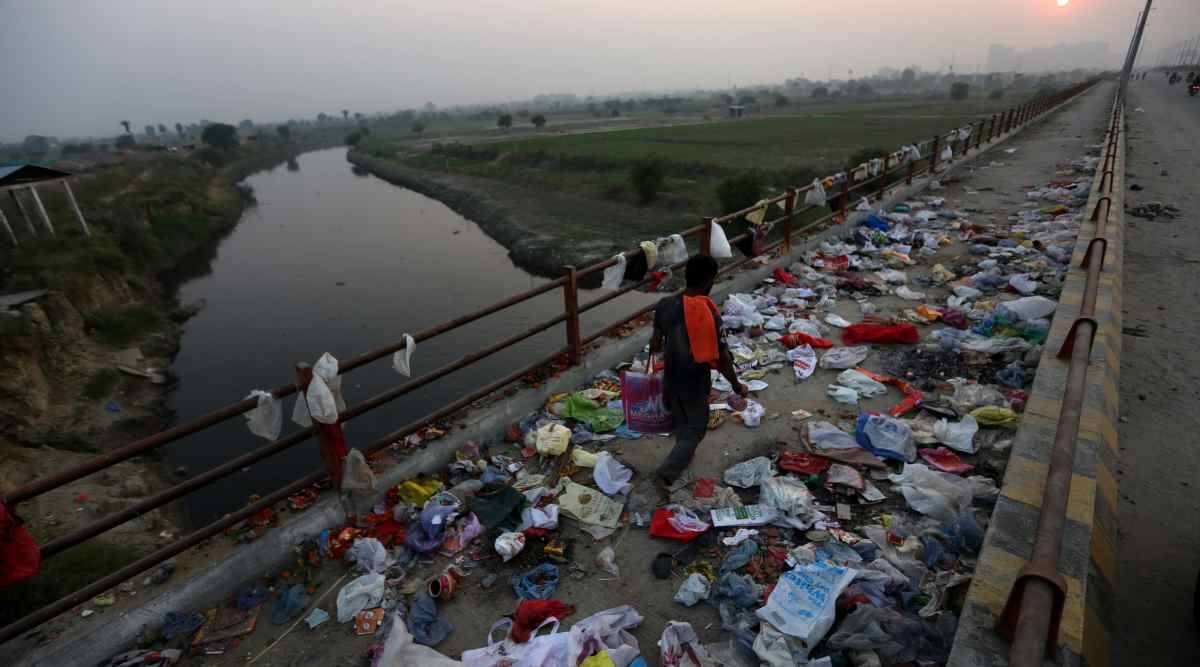
LUCKNOW, Uttar Pradesh: The National Green Tribunal (NGT) has heavily criticised authorities in Uttar Pradesh for unregulated industrial and sewage pollution in the Hindon River. NGT highlighted that the Government of Uttar Pradesh has failed to adhere to previous order of the environmental court.
NGT was presiding over a petition asking for stringent action against polluters and cleaning of the Hindon River. The petitioner argued that even though categorical directions were there, yet the authorities haven’t taken any concrete action, thereby flouting their constitutional obligation.
An NGT bench, consisting of Chairperson Adarsh Kumar Goel, and members Sudhir Agrawal, and Dr A Senthil Vel, directed to constitute a joint committee under the leadership of Durga Shanker Mishra, Chief Secretary, Uttar Pradesh. The joint committee should also include representatives from the Ministry of Environment Forest and Climate Change (MoEF&CC), National Mission for Clean Ganga (NMCG), Central Pollution Control Board (CPCB), State Pollution Control Board (SPCB) and respective district magistrate to take immediate action to prevent any further pollution of the Hindon River. The joint committee should also include concerned commissioner and Superintendents of Police, Additional Chief Secretary (ACS), Environment, ACS/ Principle Secretary, Department of Urban Development and representatives from State Irrigation and Flood Control, Uttar Pradesh.
NGT bench has also directed to deploy field monitoring teams to take note of real-time situation on the ground. The order of the environmental court reads, “The Committee may meet within one week and will be free to function online or offline, undertake visits to the sites and interact with concerned authorities and stakeholders. Remedial action will involve assessment of compensation against erring industries for past violations equal to 10 per cent turnover but not lower than the assessed cost of restoration, closure of units which are continuing to cause pollution, prosecution of the owners of the industries under the provisions of the Water (Prevention and Control of Pollution) Act, 1974, following due process of law.”
Bench has also asked the authorities to submit a report of action taken concerning all the aspects before June 30, 2023.
Hindon River originates from Shivaliks mountain ranges in Saharanpur districts and passes through Muzaffarnagar, Shamli, Meerut, Baghpat, and Ghaziabad of Western Uttar Pradesh, ultimately falling into Yamuna in Gautam Budh Nagar districts. This tributary of Yamuna travels over a distance of around 400 kilometres (km) and has a catchment area of 7,083 square km.
NGT reads, “Action Plan for restoration of the polluted stretch of River Hindon from District Saharanpur to District Ghaziabad was prepared by the authorities in UP but it is only on paper and nothing substantial has been done on ground level. The river thus continues to be highly polluted in the entire length of its travel, particularly in Districts Ghaziabad and Gautam Budh Nagar.”
The report submitted by the Uttar Pradesh Pollution Control Board (UPPCB) to NGT, highlights that there are around 310 grossly polluting industries (GPIs) that discharge their industrial effluents in the Hindon River. Out of these 310 industries, 220 are in Ghaziabad district, 35 in Saharanpur, 32 in Muzaffarnagar, 22 in Greater Noida, 7 in Baghpat and 4 in Meerut. Reports also mention that the number of Sewage Treatment Plants (STPs) and their capacity to treat sewage waste is not sufficient to meet the norms. Due to this, untreated waste is being dumped into the river.
While speaking about the report, NGT again rapped the authorities stating that the report is very casual and does not contain any action plan to tackle this issue. NGT said, “UPPCB being the regulator should have given the responsible report, which has not been done. Earlier report dated 28.01.2021 indicated imposition of environment compensation amounting to ₹11.32 crore in 230 industries and recovering ₹4.14 crores. However, in a report dated 27.01.2023, environmental compensation of ₹1.89 Crore has been mentioned. Total GPIs are 453. Thus, only imposition of environmental compensation does not serve the purpose of compliance and protection of the environment.” Industries that discharge their effluents include pulp and paper, textiles, distilleries, sugar, tanneries, etc also extract groundwater and freshwater. Apart from industrial effluents, great quantity of untreated sewage waste is also discharged into Hindon river. As per the UPPCB, 844.63 MLD of sewage waste was also being discharged, with a maximum amount coming from Ghaziabad (381 MLD).

